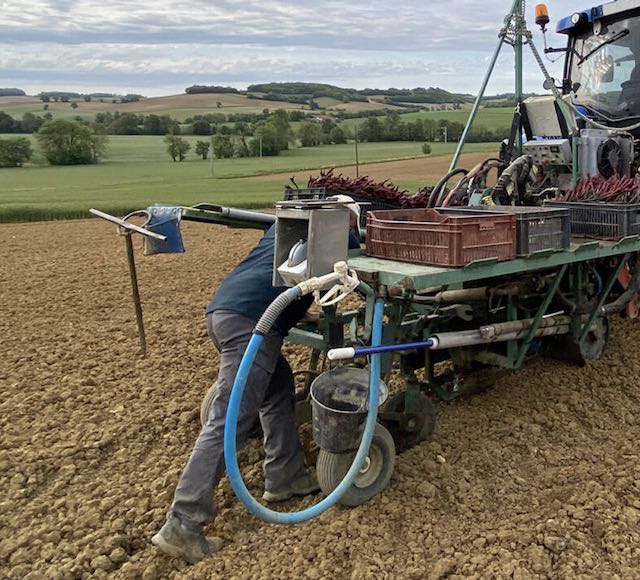Should you Plant Your Vineyard Without North-South Rows? (Grapevine Magazine)

Row orientation is one of the first decisions a grower makes when planting a new vineyard. But how much does this decision matter, and what should you consider when choosing row orientation?
For generations, many have touted north-south (N-S) row orientation as a best practice because it exposes the canopy to the most direct sunlight. But modern research suggests that, like many things, it is more complicated than this.
For some vineyards, north-south is the best choice. But a strict north-south stance could overlook other factors like field shape, variety, climate, convenience, and even aesthetics. The freedom to consider different row orientations can improve multiple aspects of vineyard management.
Benefits of North-South Orientation
Simply speaking, N-S row orientation directs more uniform solar radiation to the full canopy, compared to East-West (E-W) orientation. The east side of the canopy is exposed to direct light in the morning and the west side in the afternoon. A 2008 study (Grifoni et al) found that N-S rows received increased and more uniform solar radiation, and as a result, photosynthesis.
With E-W rows, the south side gets more direct sun than the north, possibly meaning that south-facing fruit ripens faster than north-facing fruit.
Why “It’s Complicated”
In theory, north-south row direction could enhance ripening and fruit quality by increasing sunlight exposure. However, current research paints a less clear picture.
Much of the research I have found was done in the southern hemisphere. Several of these studies took place in the same Shiraz vineyard in South Africa. Without much research in US climates, it is hard to draw too many conclusions about the region where I work, or the varieties we grow in the Midwest.
Secondly, many factors play into a grower’s decisions about row orientation beyond just sunlight interception, which I delve into later.
A 2015 study on mature vines in this South African vineyard found no significant difference in anthocyanins or grape mechanical composition between NS and EW rows. However, a later study from the same vineyard in a different year found that EW rows had lower soluble solid/titratable acidity ratios, lower anthocyanins, and lower phenolics. The other row orientations like N-S, NE-SW, and NW-SE ripened faster and produced better wine quality. Additionally, one study found that N-S rows had slightly higher yields than the other orientations.
While light exposure is of course important, too much direct sunlight on fruit can be just as harmful as over-shading. It can cause sunscald, which degrades the fruit and leads to rotting. For this reason, a grower with a south-facing VSP vineyard in a hot, sunny region may consider planting on NE-SW or E-W orientation to limit excess exposure. If N-S orientation is selected, the grower can alter canopy management practices like leaf removal to control overexposure.
Other factors to weigh against row orientation.
Growers should weigh various other decisions against row orientation when planting a vineyard. Field shape, variety, trellis system, weather, and climate all influence the bottom line and could either outweigh or exaggerate the impact of row orientation.
Like row orientation, trellis systems also affect sunlight exposure and ripening. In theory, planting N-S rows to Vertical Shoot Positioning (VSP) could compound the effect of row orientation by further increasing sun exposure. Planting on Single High Wire (SHW) might reduce the sun exposure for vines in N-S rows, protecting them from sunscald in hot, sunny areas.

